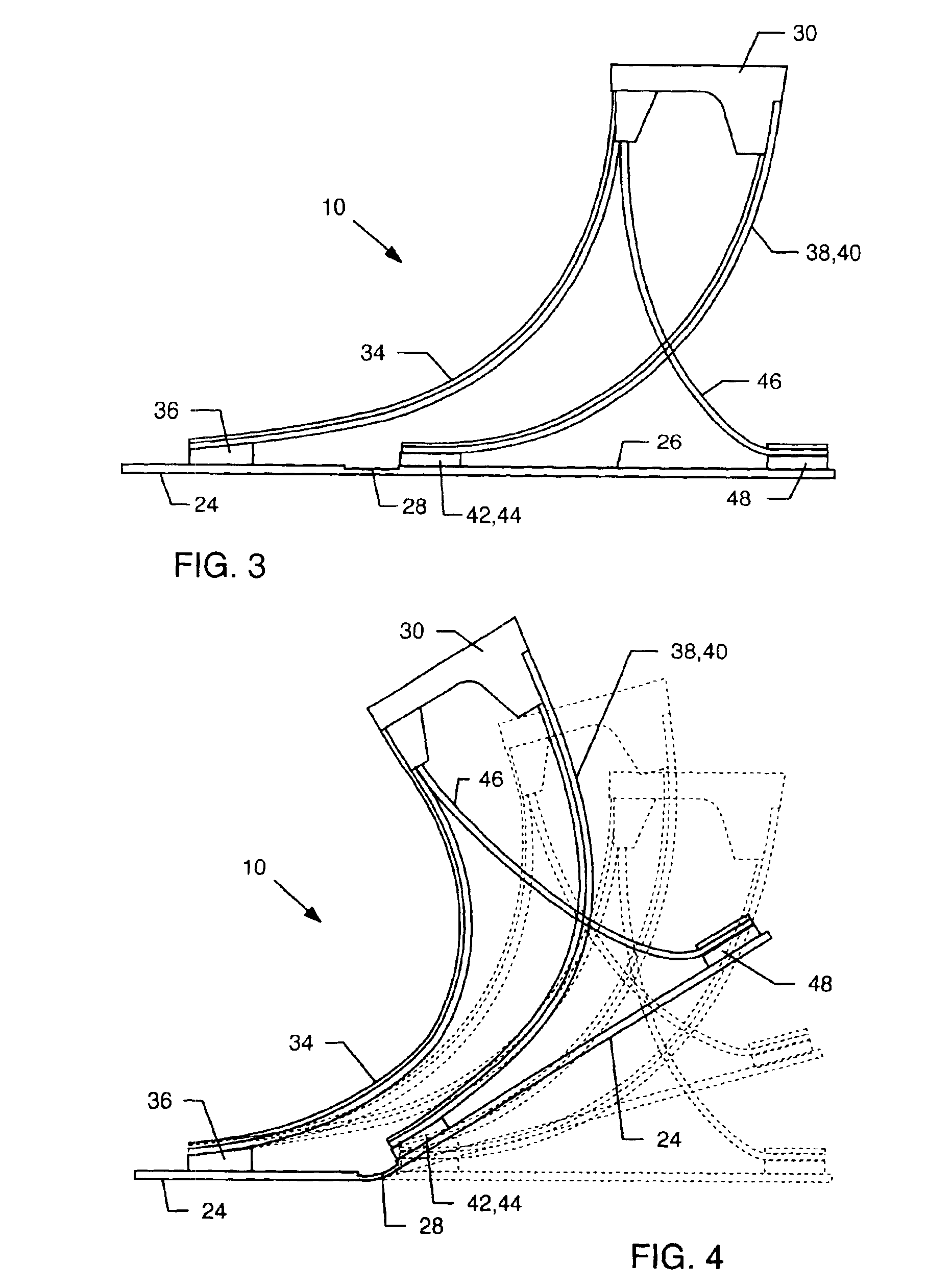Prosthetic foot
a technology for prosthetic feet and feet, applied in the field of prosthetic feet, can solve the problems of unstable anatomical ankle joints, complex joints, and limited development of functional and natural artificial feet, and achieve the effect of simple construction and durabl
- Summary
- Abstract
- Description
- Claims
- Application Information
AI Technical Summary
Benefits of technology
Problems solved by technology
Method used
Image
Examples
Embodiment Construction
[0029]As shown in the accompanying drawings for purposes of illustration the present invention resides in a prosthetic foot device having design and using materials which result in a more natural and fluid foot movement.
[0030]With reference now to FIGS. 1 and 2, a prosthetic foot 10 embodying the present invention is illustrated. The prosthetic foot device 10 is preferably encased within a rubber encasement 18 which resembles a foot and allows the user to wear shoes and otherwise provide the appearance of a natural foot, as is well-known in the art.
[0031]A ground-engaging base 20 is typically comprised of a generally planar and resiliently flexible foot bed 22. The foot bed 22 can be comprised of many materials, but it has been found that material such as a transmission belt is sufficiently durable and yet provides the characteristics desired by the present invention. However, any flexible material is contemplated by the present invention as comprising the foot bed 22.
[0032]In the e...
PUM
 Login to View More
Login to View More Abstract
Description
Claims
Application Information
 Login to View More
Login to View More - R&D
- Intellectual Property
- Life Sciences
- Materials
- Tech Scout
- Unparalleled Data Quality
- Higher Quality Content
- 60% Fewer Hallucinations
Browse by: Latest US Patents, China's latest patents, Technical Efficacy Thesaurus, Application Domain, Technology Topic, Popular Technical Reports.
© 2025 PatSnap. All rights reserved.Legal|Privacy policy|Modern Slavery Act Transparency Statement|Sitemap|About US| Contact US: help@patsnap.com



